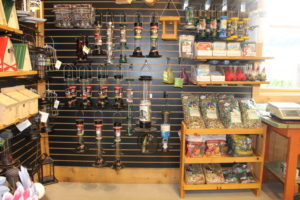Price is What You Pay; Value is What You Get!
Over the years, you’ve seen and heard many folks in our industry, myself included, talk loudly and emphatically about the absolute necessity for every company to clearly state
what their “value proposition” is for your customers to understand exactly who you are, what you stand for, and why they should establish a business relationship with you, rather than the big box retailer down the street or, even worse, a retailer outside of our industry.
For some garden center operators, it’s been a tough concept to truly grasp, especially when many are still in the business of selling stuff at a price, with the incorrect belief that the customer is only focused on product and price.
Now we know that business model may have worked years ago, with the locally owned garden centers (LOGC) having superior product, care and maintenance of the products on display, and better educated sales consultants to assist the customer than the big box stores, but the big boxes have raised the bar and tremendously improved their product quality and assortments (with many of their products coming from the same growers that the LOGC’s purchase from!).
This means what had been a major LOGC advantage has been greatly diminished or neutralized … and it’s almost impossible to think that any LOGC can, or would want to, try to go head to head with anyone on having the lowest price as their competitive advantage.Your operating costs, product acquisition costs, payroll and other overhead expenses are considerably higher than the big boxes (plus the big guys have an advantage of spreading their general operating costs over all departments in the store, not just their garden center operation).
I’m reminded of this business truism: If you sell your products strictly on the merits of price alone, you put yourself at the mercy of your dumbest competitor. Competing on price alone is nothing more than a guaranteed race to the bottom of pro tability, a place with no winners!
Today’s competitive business climate dictates that the customer is driving our bus, and we must look at our business principles through the customer’s eyes.
The consumer has more choices on where and what they spend their money on than ever before, and this is even more important in a category that is still perceived to be discretionary, and your retail location has to be viewed as a preferred destination where the consumer has to make a conscious decision to make a special trip to shop your store.
This brings us to a discussion on price versus value. “Price is what you pay, value is what you get” is a principle attributed to Warren Buffet, used by him to explain what guides his investing strategy.
But it also has implications that can be applied and adopted as a guiding principle for the independent retailer, especially when one looks at it through the perspective of a consumer.
Too many retailers still look at retail pricing as an absolute formula; they simply apply a desired pro t margin multiplier to their acquisition cost to establish the retail price point for an item. And they still tend to believe that the price point, be it the regular price or a promotional price, is the most important driver to get the customer through your front door, that price is what separates them from other retailers.
However, I would offer that, in the real world, perhaps two out of 100 customers who shop your store even know the comparable prices in other retailers for the item they are interested in purchasing. So if price isn’t the major impetus to entice customers to your store, what attracts them and “closes the deal” once they get there?
From a consumer’s perspective, there’s a signi cant difference between the price or transactional cost paid at the register for an item, and the perceived relative worth or value of that item. And as Warren Buffet identi ed, value is what drives consumer behavior and demand; price is only what they pay to receive the value they desire.
So what are some of the contributors to the consumer’s perception of value or worth? To answer this question, rst understand that you as a retailer cannot deliver value as you would a product or service; rather it is something that is determined by the consumer.
What you can do is nd ways to communicate and reinforce positive responses to innate behavioral needs your customer has so they can leave believing they purchased something of great worth or value speci cally for them.
Here are a few examples of things consumers equate with value:
• Do they have con dence in the products you offer, the brands you sell and you as a retailer?
• Do you and the products you offer exceed the expectations?
• Will what they purchase from you provide a solution to a problem or need that they have?
• What will other people think about their decision on what they bought and where they bought it? Will this purchase give them respect, or generate positive feedback from others?
• Did they have enough information to make a good decision?
• How does this purchase make them feel? Will it increase their feelings of self-worth, success and satisfaction?
Looking at these, I think you can see that there’s no one “thing” you can do to drive “value;” rather, “value” is an amalgamation of emotional responses derived from the customer’s whole buying experience, the human and systems interaction they have at every touch point in your store, your policies and processes, and the products and services you provide.
Price is absolute and comparable, and value is relative, yet value has the unique power to drive traf c and sales, build long-term relationships and become your key competitive advantage in your marketplace.
Paraphrasing Warren Buffet, I suggest that you consider the following as part of your mission statement as a guiding principle: Price is what the customer pays; value is what we provide to them …

















 Videos
Videos





